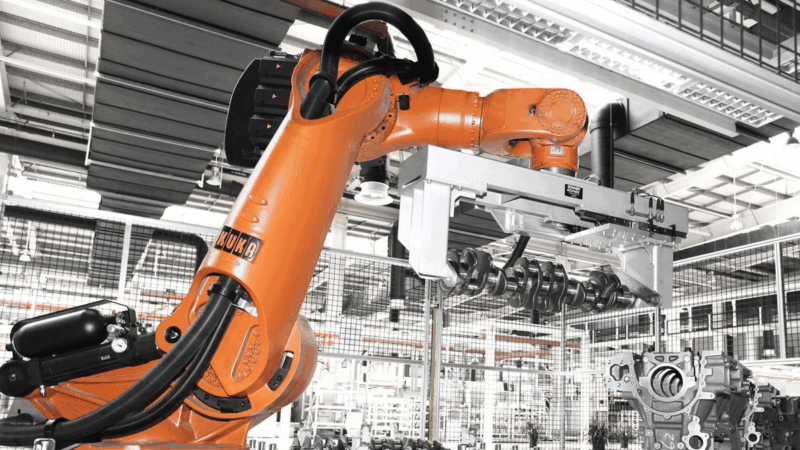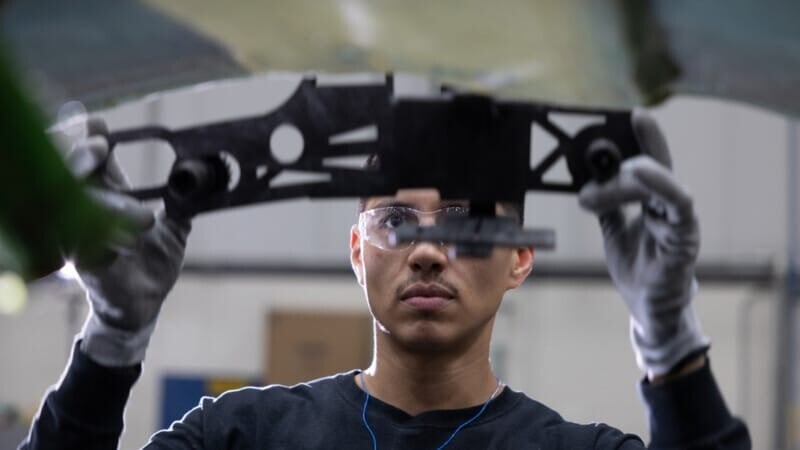
Why Integrate Factory Systems With 3D Printing Software?
We all have systems that drive our day to day operations on the shop floor. What problems would it solve to integrate yours with 3D printing software?
Sometimes, these software systems - such as Enterprise Resource Planning (ERP) systems and Manufacturing Execution Systems (MES) - can connect to one another. When they do, integrating these systems allows automation to save time, reduce errors, and reduce delays that take place between actions and follow-up.
However in the majority of cases, these systems must be operated manually, making management and upkeep both time intensive and error prone. The result is systems that are disconnected: not just from the rest of the factory, but also the people in them.
What if your production management systems spoke with one another, and with your 3D printing software?
Factory software systems
Core factory systems are designed to administer and organize complex manufacturing environments. Each system tends to solve a specific problem or set of problems.
For example, manufacturing Execution Systems (MES) help users track and document products as they progress through the series of business activities that turn raw materials into finished goods. Product Lifecycle Management (PLM) systems exist to provide and manage all relevant data relating to design, production and support for a company’s manufactured products.
Enterprise-scale 3D printing software systems provide digital repositories for parts, slice part files, manage and monitor each print job, and keep additive manufacturing operations secure.
Integrations between distinct manufacturing software systems - while not required for each system to do its job - generally make upkeep and management of factory operations significantly more efficient and less error prone, through automation.
How do 3D printing software integrations work?
Integrations between different factory software systems and additive manufacturing systems rely on 3D printing software APIs.
An API (application programming interface) is an intermediary software connection that allows two different computer applications to connect and talk to each other, as permitted by predetermined functionality and security parameters. APIs are often used to facilitate integrations for interoperability between different applications. For example, through using the Google Maps API, a real estate website could receive information from Google Street View to show what a property looks like from the sidewalk, along with its surrounding vicinity.
An example of how APIs can be used in the factory is to connect separate ordering systems and billing systems. This allows for the invoice process to be automated, for a completed work order. In the manufacturing space, countless other API integrations exist that allow automated interoperability between different software systems.
3D printing software APIs: For businesses that leverage additive manufacturing in their factory operations, 3D printing software can be integrated into other factory systems through its own API, to automate AM workflows at other touchpoints in the digital factory. As a 3D printing software, Markforged’s Eiger software has an API. The Eiger API allows users to receive details from Eiger around their parts, builds, print jobs, and printers, which can be passed through to other important business systems. A user’s credentials control what information can be shared or passed between the 3D printing software and other applications.

Benefits of 3D printing software integration
3D printing software can integrate with many different types of factory software: such as ERP, MES, QMS, CRM, AM/EAM, MRO, SCM, financials, and accounting systems. Users can benefit from integrating 3D printing software with the core factory software systems.
- Quotes can be generated, or parts can be printed directly from these systems.
- Orders, contracts, costs and other aspects of 3D printed parts can be managed more easily in supply chain management systems that communicate with AM systems
- User control management ensures that additive manufacturing functions can be controlled by the group that best knows AM.
- Additive manufacturing operations integrated with other business workflows are more repeatable, efficient, simplified, and have a reduced margin for error.
- AM operations can be scaled up using systems widely used at each plant, without necessitating a significant overhaul in workflows.
- Integration provides access to users of one software system to the workflows and benefits of another. For 3D printing software, this enables organizations to extend the benefits of AM throughout the org without hiring or training for 3D print slicing and production.
- Extensible API designs allow modifications to be made to the existing API without disrupting how it works for existing consumers.
- Connected systems promote collaboration, as opposed to contributing to the centralization of information. Information is easily shared and transferred, rather than being limited to a single repository.
- 3D printing part production can provide traceability through the following:
- An information flow can be followed to determine the origin of an order, the unique part identifier, the 3D printer that completed the job, or the delivery address of the specific part.
- 3D printing software integration creates a digital thread, which allows traceability of a part through a system, and which people and processes were involved in that part’s journey.
Examples of 3D printing software integrations
Here are a few examples of how 3D printing software, through the Eiger API, can integrate with other factory systems for more efficient workflows:
Digital Kanban Inventory Systems trigger part replenishment based on demand. When inventory hits a minimum threshold, these just-in-time inventory management systems order the number of parts needed to maintain stock.
Now, imagine if that order went straight to a professional 3D printer, automatically prompting it to print parts overnight: this is a reality with Eiger API, where inventory limits can kick off builds right at the point of need.
Asset Management. Users printing parts are creating assets for their company. Serializing and tracking those assets as they’re put into operation and production is key - and can be automated with Eiger API.
When parts are printed, new records can automatically be created in the Asset Management system, creating a serial number and passing that number back to the 3D printer software as part metadata. Manual input and data entry can be reduced by hours per day, while keeping a part registry that is always up to date.
Quality and Reporting. Part criticality can require that part dimensions are confirmed in spec before end-use approval. With Eiger API and Blacksmith 3D printing software, users can print, check, and file the report all automatically. A part’s digital scan report, including tolerances and deviations, can be generated and appended to a part’s digital record to be signed for approval and referenced if needed.
The process from design to printed part in Eiger has many connection points to other systems in each factory. 3D printing software integrations can automate important AM processes and workflows: making tasks faster, more efficient, and less error-prone.
How might integrating 3D printing software streamline yours?

Industry 4.0 in the Context of Professional 3D Printers

Vestas

Hangar One Avionics Implements Blacksmith for Digitizing Part Inspection
All of the blogs and the information contained within those blogs are copyright by Markforged, Inc. and may not be copied, modified, or adopted in any way without our written permission. Our blogs may contain our service marks or trademarks, as well as of those our affiliates. Your use of our blogs does not constitute any right or license for you to use our service marks or trademarks without our prior permission. Markforged Information provided in our blogs should not be considered professional advice. We are under no obligation to update or revise blogs based on new information, subsequent events, or otherwise.
새로운 정보를 놓치지 마세요
Markforged의 최신 컨텐츠를 편지함으로 받으시려면 구독하십시오.

